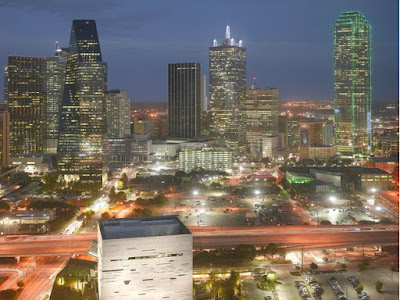Dallas-Fort Worth's booming population growth blows past the rest of the country
Dallas-Fort Worth rolled out the country’s biggest welcome mat from 2015 to 2016. New estimates from the U.S. Census Bureau indicate Dallas-Fort Worth welcomed more than 140,000 new residents during the one-year period — the most of any metro area in the U.S.
In July 2015, the population of the Dallas-Fort Worth area stood at 7,089,888, according to Census Bureau figures. Just a year later, the region’s population had jumped to 7,233,323. That’s a one-year spike of 143,435 residents, putting Dallas-Fort Worth at No. 1 for growth in terms of sheer numbers, rather than percentage.
Another way of looking at it: The Metroplex added 393 residents per day from July 2015 to July 2016.
The Census Bureau numbers take into account births, deaths, and people moving into and out of the metro area.
In case you were curious, the Houston metro area ranked second, right behind Dallas-Fort Worth, from 2015 to 2016 for the number of residents added — just over 125,000.
If you need more ammo for the Dallas-versus-Houston rivalry, here’s another stat: Dallas-Fort Worth ranked 35th for percentage growth from 2015 to 2016 (2 percent), while Houston held down the No. 48 spot (1.9 percent).
In all, nine suburban counties in Dallas-Fort Worth appeared among the 100 fastest-growing counties in 2015-16 based on percentage increases:
- Rockwall County — 3.65 percent growth rate. Ranked No. 25 nationally for county growth. July 2016 population: 93,978.
- Denton County — 3.56 percent growth rate. Ranked No. 28 nationally for county growth. July 2016 population: 806,180.
- Kaufman County — 3.39 percent growth rate. Ranked No. 36 nationally for county growth. July 2016 population: 118,350.
- Ellis County — 3.07 percent growth rate. Ranked No. 50 nationally for county growth. July 2016 population: 168,499.
- Collin County — 2.90 percent growth rate. Ranked No. 68 nationally for county growth. July 2016 population: 939,585
- Hood County — 2.73 percent growth rate. Ranked No. 73 nationally for county growth. July 2016 population: 56,857.
- Parker County — 2.66 percent growth rate. Ranked No. 79 nationally for county growth. July 2016 population: 129,441.
- Wise County — 2.58 percent growth rate. Ranked No. 85 nationally for county growth. July 2016 population: 64,455.
- Hunt County — 2.48 percent growth rate. Ranked No. 98 nationally for county growth. July 2016 population: 92,073.
- Looking at population growth a different way, Dallas and Tarrant counties both ranked among the top 10 counties in 2015-16 for numeric increases in population, rather than percentage increases.Dallas County added 29,209 residents during the one-year span to wind up with a population of 2,574,984 in July 2016, according to Census Bureau estimates. Tarrant County grew even more, gaining 35,462 residents and landing at a population of 2,016,872 in July 2016. Those numbers do not come as a surprise to officials in Fort Worth, which anchors Tarrant County.“The city and region offer significant employment opportunities, diverse and affordable housing options, and a wonderful quality of life. All of this has been recognized nationally, and continues to draw people to our city and the region,” says Brenda Hicks-Sorensen, assistant director of economic development for the City of Fort Worth.The two remaining counties in the Dallas-Fort Worth area — Johnson and Somervell — picked up residents in 2015-16, but not enough to put them in the rankings dominated by neighboring counties. During the one-year period, Johnson County grew 2.3 percent, with the addition of 3,600 residents, and Somervell County grew just 0.5 percent, with the addition of only 46 residents.



Comments
Post a Comment